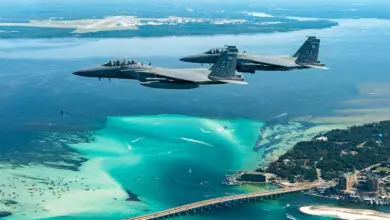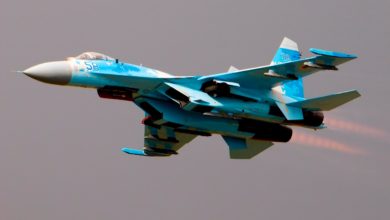USAF Deters War Game Taiwan Invasion With Updated Tactics
The classified war game took place last fall.
The US Air Force (USAF) has deterred a Chinese invasion of Taiwan in a simulated conflict set more than a decade from now using updated military tactics, Yahoo News reported.
The classified war game, which took place last fall, began with a Chinese biological attack sweeping through US military bases and warships in the Indo-Pacific region.
As US forces reeled under the attack, the Chinese military amassed under cover of a military exercise, culminating in massive missile strikes on US bases and warships, coupled with a lightning air and amphibious assault on Taiwan.
The war game took place months after more than a thousand crew members of the USS Theodore Roosevelt tested positive for COVID-19, rendering the vessel inoperative for two months.
Pentagon-Tested Concepts Still on Drawing Board
According to US Air Force Lt. Gen. S. Clinton Hinote, deputy chief of staff for strategy, integration, and requirements, the war game tested Pentagon concepts and capabilities still on the drawing board in many cases, Yahoo News wrote.
The US military adopted a more defensive and dispersed posture during the simulated conflict, relying less on “large, vulnerable bases, ports and aircraft carriers.”
Represented by team Blue, the US used “long-range, mobile strike systems including anti-ship cruise missile batteries, mobile rocket artillery systems, unmanned mini-submarines, mines, and robust surface-to-air missile batteries for air defense.”
Moreover, emphasis was put on “surveillance and reconnaissance capabilities for both early warning and accurate intelligence to enable quicker decisions.”
“We created a force that had resiliency at its core, and the Red Team (Chinese military) looked at that force and knew that it would take a tremendous amount of firepower to knock it out,” said Hinote.
Chinese General’s Refusal to Invade Taiwan
Hinote explained that the telling moment during the simulation came when the Red Team commander expressed his unwillingness to attack Taiwan, seeing the posture of US forces.
“The Red Team leader is the most experienced and aggressive officer in these war games across the Defense Department, and when he initially looked at the resiliency of our defensive posture both in Taiwan and the region, he said, ‘No, I’m not going to attack,’” recalled Hinote.
The biggest takeaway from the simulation for US military planners was the supposed impact on the Chinese military because of how US forces were postured against them. This caused “Chinese leaders to question whether they can accomplish their goals militarily. I think that’s what deterrence looks like in the future,” Hinote explained.

DoD’s Spending Plans Not on Right Direction
As a result of insight gained from the war game, Hinote rued that the force posture required to deter China isn’t reflected in the current spending at the Department of Defense.
“We’re beginning to understand what kind of US military force it’s going to take to achieve the National Defense Strategy’s goals,” he said. “But that’s not the force we’re planning and building today.”
Previous War Games
The war game was particularly significant, as it came after a series of similar conflict simulations played out by the Pentagon which resulted in US military losses.
“Whenever we war-gamed a Taiwan scenario over the years, our Blue Team routinely got its ass handed to it because in that scenario time is a precious commodity and it plays to China’s strength in terms of proximity and capabilities,” said David Ochmanek, a senior RAND Corporation analyst and former deputy assistant secretary of defense for force development, to Yahoo News.
Hinote explained that the Chinese started investing in their military capabilities more than a decade ago, leaving the US military’s model of expeditionary warfare, “where we push forces forward and operate out of relatively safe bases and sanctuaries, increasingly difficult.”
“At that point, the trend in our war games was not just that we were losing, but we were losing faster,” the USAF general added.












